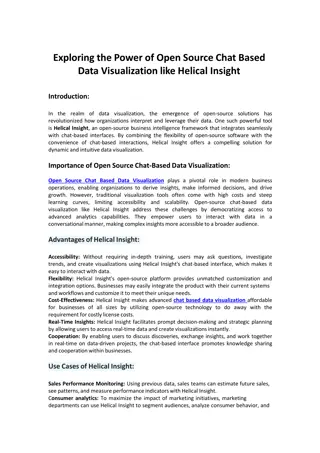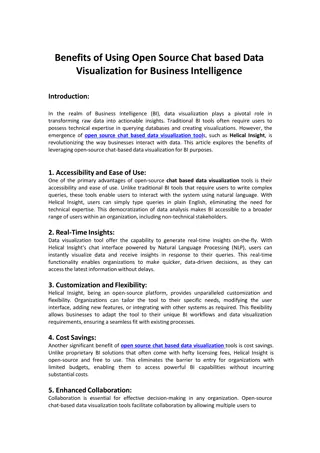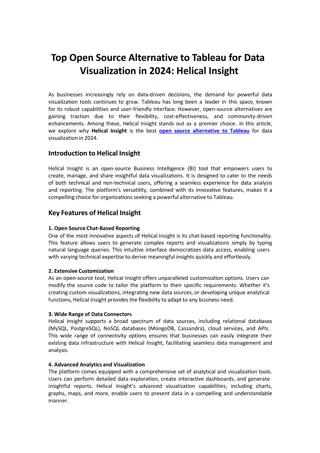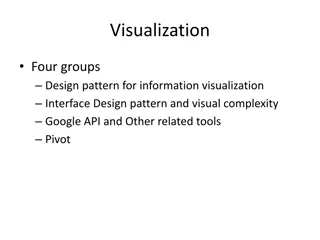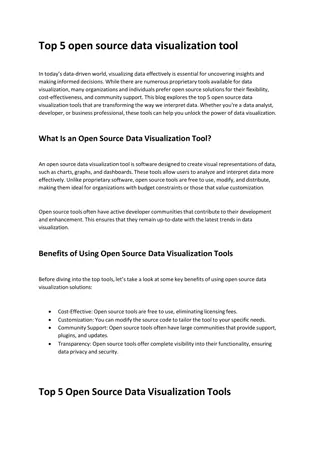Data Movement Visualization by Yunang Chen and Wolong Yuan
Visualize data movements with insights on Ceph, backend communication, OSD behaviors, tracking OSD configurations, alternative tracking approaches, and API functionalities. Includes images and details on each aspect discussed.
Download Presentation

Please find below an Image/Link to download the presentation.
The content on the website is provided AS IS for your information and personal use only. It may not be sold, licensed, or shared on other websites without obtaining consent from the author.If you encounter any issues during the download, it is possible that the publisher has removed the file from their server.
You are allowed to download the files provided on this website for personal or commercial use, subject to the condition that they are used lawfully. All files are the property of their respective owners.
The content on the website is provided AS IS for your information and personal use only. It may not be sold, licensed, or shared on other websites without obtaining consent from the author.
E N D
Presentation Transcript
Data Movement Visualization Yunang Chen, Wolong Yuan
Outline Background Overview Tracking API Visualization Test & Demo
Background Ceph does not expose the backend communication between OSDs Every metrics shown in the dashboard are client-related One PerfCounter currently provided by OSD daemon: replicated written data size Only collected during debugging mode Does not track the sender of replicated data Hard to understand / diagnose OSD behaviors
Tracking Gather OSD configurations (host IPs, ports) through Ceph s JSON dumps. Expensive command, ~0.5 sec Performed on different nodes at different timestamps to ensure up-to-dated information Use tcpdump to monitor the network traffic in Ceph s (internal) cluster network. Calculate and report the total size of package payloads received within a small interval.
Alternative Approach for Tracking Add as a metric of Ceph s built-in PerfCounter module. Implementation overview: 1. Pass package sender to OpRequest at ReplicatedBackend (Placement Group) class 2. Write info to logger when an OpRequest is committed. 3. Store tracking info as a histogram, OSD id as horizontal axis and total bytes as Vertical axis + Slightly more accurate (ignore headers) +/- Do not keep track of other packages (Ack, delete, etc. -> only a small portion of traffic) - No appropriate data structure: the hacky histogram approach does not scale (constant bincount) Expensive to query, not responsive
API Post the current state of osd cluster { "type": 0, "osds": [0, 1, 2], "activeOsds": [0, 1] }
API Post one data flow to the server { "type": 1, "start": 1, "end": 0, "size": 10 }
{ API "type": 2, "usage": [{ "id": 0, "used": 2.01, "unused": 12.34 }, { "id": 1, "used": 1.12, "unused": 9.20 }, { "id": 2, "used": 1.25, "unused": 8.03 }] Post disk usage of each osd node }
Visualization Implemented with D3.js Data is provided by server through websocket Use flowing rectangle box to represent the data flow The color of box illustrates the data rate 16 MB/s: 8 MB/s: 0 MB/s:
Test & Demo General benchmark Add a new OSD node Change primary affinity Change replication OSD out & in
General benchmark bench.mov
Change primary affinity pa.mov The primary affinity of the 3 OSDs on the right hand side is set to 0.
Add a new OSD node new.mov
OSD out & in up.mov



